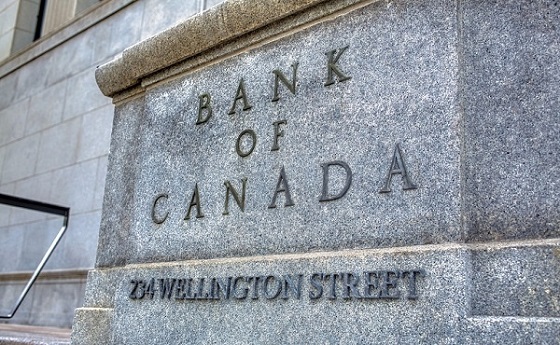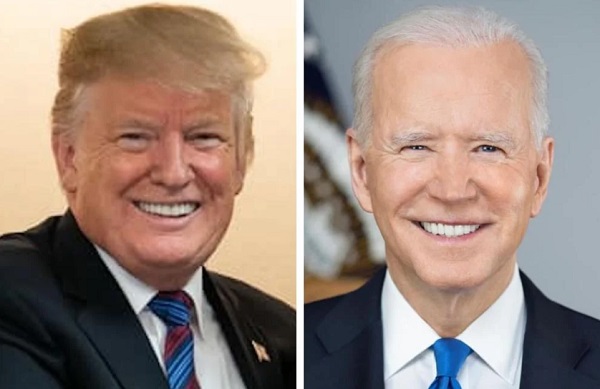Business
Federal government’s latest media bailout another bad idea

From the Fraser Institute
By Matthew Lau
If the value of local radio stations, as measured by how much revenue they generate, is higher than the costs of running those stations, no subsidies are needed to keep them going. Conversely, if the costs are higher than the benefits, it doesn’t make sense to keep those radio stations on the air.
The governmentalization of the news media in Canada continues apace. According to a recent announcement by the Trudeau government, the “CRTC determined that a new temporary fund for commercial radio stations in smaller markets should be created.” Now, radio stations outside of Montreal, Toronto, Vancouver, Calgary, Edmonton and Ottawa-Gatineau will be eligible for taxpayer subsidies.
Clearly a bad idea. Firstly, there’s no obvious market failure the government will solve. If the value of local radio stations, as measured by how much revenue they generate, is higher than the costs of running those stations, no subsidies are needed to keep them going. Conversely, if the costs are higher than the benefits, it doesn’t make sense to keep those radio stations on the air.
The government said the new funding is “temporary” but as economists Milton and Rose Friedman famously observed, “Nothing is so permanent as a temporary government program.” Taxpayers may can reasonably expect that subsidies to local radio news stations will become an ongoing expense instead of a onetime hit to their wallets.
Indeed, the Trudeau government has a history of making temporary or “short-term” costs permanent. Before coming to power in 2015, the Liberals proposed “a modest short-term deficit” of less than $10 billion annually for three years; instead this fiscal year the Trudeau government is running its 10th consecutive budget deficit with the cumulative total of more than $600 billion.
Secondly, the governmentalization of media will likely corrupt it. Here again an observation from Milton Friedman: “Any institution will tend to express its own values and its own ideas… A socialist institution will teach socialist values, not the principles of private enterprise.” Friedman was talking about the public education system, but the observation applies equally to other sectors that the government increasingly exercises control over.
A media outlet that receives significant government funding is less likely to apply healthy skepticism to politicians’ claims of the supposed widespread benefits of their large spending initiatives and disbursements of taxpayer money. The media outlet’s internal culture will naturally lean more heavily towards government control than free enterprise.
Moreover, conflict of interest becomes a serious issue. To the extent that a media outlet gets its revenue from government instead of advertisers and listeners, its customer is the government—and the natural inclination is always to produce content that will appeal to the customer. Radio stations receiving significant government funding will have a harder time covering government in an unbiased way.
Finally, as a general rule, government support for an industry tends to discourage innovation, and radio and other media are no exception. When new companies and new business models enter a sector, the government should not through subsidies try to keep the incumbents afloat.
“The media, like any other business, continually evolves,” noted Lydia Miljan, professor of political science at the University of Windsor and a senior fellow at the Fraser Institute, in a recent essay. “As each innovation enters the market, it displaces audiences for the legacy players. But does that innovation mean we should prop up services that fewer people consume? No. We allow other industries to adapt to new market conditions. Sometimes that means certain industries and companies close. But they are replaced with something else.”
To summarize—there are three major problems with the Trudeau government’s new fund for radio stations. First, it will impose costs on taxpayers that, despite the government’s label, may not be “temporary” and the compensating benefits will be lower than the costs. Second, increased government funding will damage the ability of those radio stations to cover the government with neutrality and healthy skepticism. And third, the new fund will discourage innovation and improvement in the media sector as a whole.
Author:
Banks
Top Canadian bank studies possible use of digital dollar for ‘basic’ online payments

From LifeSiteNews
A new report released by the Bank of Canada proposed a ‘promising architecture well-suited for basic payments’ through the use of a digital dollar, though most Canadians are wary of such an idea.
Canada’s central bank has been studying ways to introduce a central bank digital currency (CBDC) for use for online retailers, according to a new report, despite the fact that recent research suggests Canadians are wary of any type of digital dollar.
In a new 47-page report titled, “A Retail CBDC Design For Basic Payments Feasibility Study,” which was released on June 13, 2025, the Bank of Canada (BOC) identified a “promising architecture well-suited for basic payments” through the use of a digital dollar.
The report reads that CBDCs “can be fast and cheap for basic payments, with high privacy, although some areas such as integration with retail payments systems, performance of auditing and resilience of the core system state require further investigation.”
While the report authors stopped short of fully recommending a CBDC, they noted it is a decision that could happen “outside the scope of this analysis.”
“Our framing highlights other promising architectures for an online retail CBDC, whose analysis we leave as an area for further exploration,” reads the report.
When it comes to a digital Canadian dollar, the Bank of Canada last year found that Canadians are very wary of a government-backed digital currency, concluding that a “significant number” of citizens would resist the implementation of such a system.
Indeed, a 2023 study found that most Canadians, about 85 percent, do not want a digital dollar, as previously reported by LifeSiteNews.
The study found that a “significant number” of Canadians are suspicious of government overreach and would resist any measures by the government or central bank to create digital forms of official money.
The BOC has said that it would continue to look at other countries’ use and development of CBDCs and will work with other “central banks” to improve so-called cross border payments.
Last year, as reported by LifeSiteNews, the BOC has already said that plans to create a digital “dollar,” also known as a central bank digital currency (CBDC), have been shelved.
Digital currencies have been touted as the future by some government officials, but, as LifeSiteNews has reported before, many experts warn that such technology would restrict freedom and could be used as a “control tool” against citizens, similar to China’s pervasive social credit system.
The BOC last August admitted that the creation of a CBDC is not even necessary, as many people rely on cash to pay for things. The bank concluded that the introduction of a digital currency would only be feasible if consumers demanded its release.
Conservative Party leader Pierre Poilievre has promised, should he ever form the government, he would oppose the creation of a digital dollar.
Contrast this to Canada’s current Liberal Prime Minister Mark Carney. He has a history of supporting central bank digital currencies and in 2022 supported “choking off the money” donated to the Freedom Convoy protests against COVID mandates.
Alberta
Calgary taxpayers forced to pay for art project that telephones the Bow River

From the Canadian Taxpayers Federation
The Canadian Taxpayers Federation is calling on the City of Calgary to scrap the Calgary Arts Development Authority after it spent $65,000 on a telephone line to the Bow River.
“If someone wants to listen to a river, they can go sit next to one, but the City of Calgary should not force taxpayers to pay for this,” said Kris Sims, CTF Alberta Director. “If phoning a river floats your boat, you do you, but don’t force your neighbour to pay for your art choices.”
The City of Calgary spent $65,194 of taxpayers’ money for an art project dubbed “Reconnecting to the Bow” to set up a telephone line so people could call the Bow River and listen to the sound of water.
The project is running between September 2024 and December 2025, according to documents obtained by the CTF.
The art installation is a rerun of a previous version set up back in 2014.
Emails obtained by the CTF show the bureaucrats responsible for the newest version of the project wanted a new local 403 area code phone number instead of an 1-855 number to “give the authority back to the Bow,” because “the original number highlighted a proprietary and commercial relationship with the river.”
Further correspondence obtained by the CTF shows the city did not want its logo included in the displays, stating the “City of Calgary (does NOT want to have its logo on the artworks or advertisements).”
Taxpayers pay about $19 million per year for the Calgary Arts Development Authority. That’s equivalent to the total property tax bill for about 7,000 households.
Calgary bureaucrats also expressed concern the project “may not be received well, perceived as a waste of money or simply foolish.”
“That city hall employee was pointing out the obvious: This is a foolish waste of taxpayers’ money and this slush fund should be scrapped,” said Sims. “Artists should work with willing donors for their projects instead of mooching off city hall and forcing taxpayers to pay for it.”
-

 Daily Caller2 days ago
Daily Caller2 days agoUnanimous Supreme Court Ruling Inspires Hope For Future Energy Project Permitting
-

 espionage2 days ago
espionage2 days agoFBI Buried ‘Warning’ Intel on CCP Plot to Elect Biden Using TikTok, Fake IDs, CCP Sympathizers and PRC Students—Grassley Probes Withdrawal
-

 Agriculture2 days ago
Agriculture2 days agoUnstung Heroes: Canada’s Honey Bees are not Disappearing – They’re Thriving
-

 conflict19 hours ago
conflict19 hours agoVictor Davis Hanson Makes a Disturbing Prediction About What Happens If Iran Survives
-

 espionage2 days ago
espionage2 days agoFrom Sidewinder to P.E.I.: Are Canada’s Political Elites Benefiting from Beijing’s Real Estate Reach?
-

 Automotive19 hours ago
Automotive19 hours agoSupreme Court Delivers Blow To California EV Mandates
-

 Energy2 days ago
Energy2 days agoWho put the energy illiterate in charge?
-

 Alberta2 days ago
Alberta2 days agoAlberta’s carbon diet – how to lose megatonnes in just three short decades



